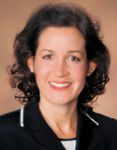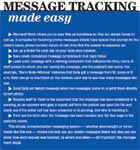- Case-Based Roundtable
- General Dermatology
- Eczema
- Chronic Hand Eczema
- Alopecia
- Aesthetics
- Vitiligo
- COVID-19
- Actinic Keratosis
- Precision Medicine and Biologics
- Rare Disease
- Wound Care
- Rosacea
- Psoriasis
- Psoriatic Arthritis
- Atopic Dermatitis
- Melasma
- NP and PA
- Skin Cancer
- Hidradenitis Suppurativa
- Drug Watch
- Pigmentary Disorders
- Acne
- Pediatric Dermatology
- Practice Management
- Prurigo Nodularis
- Buy-and-Bill
Article
A message about messages
Heading off unnecessary incoming calls will give you and your staff more time to handle appropriate telephone messages.


A live operator - or even an auto attendant, used appropriately - can get callers to the right department or person quickly. At a minimum, your manager, biller and referral coordinator should have direct lines or extensions. Reducing call transfers saves time for everyone.
Voicemail is a necessary evil, but don't use it as your answering service. You can spend two or three minutes replaying and replying to each voice mail. A nurse handling 30 voicemails a day may be tied up for a whopping 90 minutes of mostly unproductive and non-value-added time daily.
Tell your staff they are expected to answer their phones unless they are busy with patients. Never allow them to use voicemail to "screen" calls.
There's a bit more to taking a phone message than just jotting down some notes and leaving a slip of paper somewhere. Consider using pre-printed or computerized message forms (see sidebar) that prompt staff to get important information from callers, including their name, physician, question, urgency of request and return phone numbers.
Unless the caller's question is very sensitive, he might agree to have the reply left on his voicemail, answering machine or e-mail. To be on the safe side, make sure that all patients have the opportunity to sign forms giving you permission to leave reply messages on their home voicemail, home e-mail, and/or with a spouse or family member whom they designate by name.
Also instruct your staff to set reasonable expectations for when callers can expect a reply. (Hint: Set the bar reasonably low so you can usually beat that timeframe and avoid repeat calls.)
Make sure messages get to the person authorized to respond. Electronic medical records often contain electronic message routers, but if you use a paper-based system, build a simple computerized template in Microsoft Word that can help you both send and track messages (see sidebar).
Inevitably, some calls cannot be answered within the expected timeframe. To discourage those callers from making return calls, return every phone call within the timeframe you provided. Explain that you're working on the patient's question or issue. Then, give the caller a new expectation.
Remember, exceeding expectations creates a delighted patient, so always extend the timeframe a bit beyond what you know is possible.






